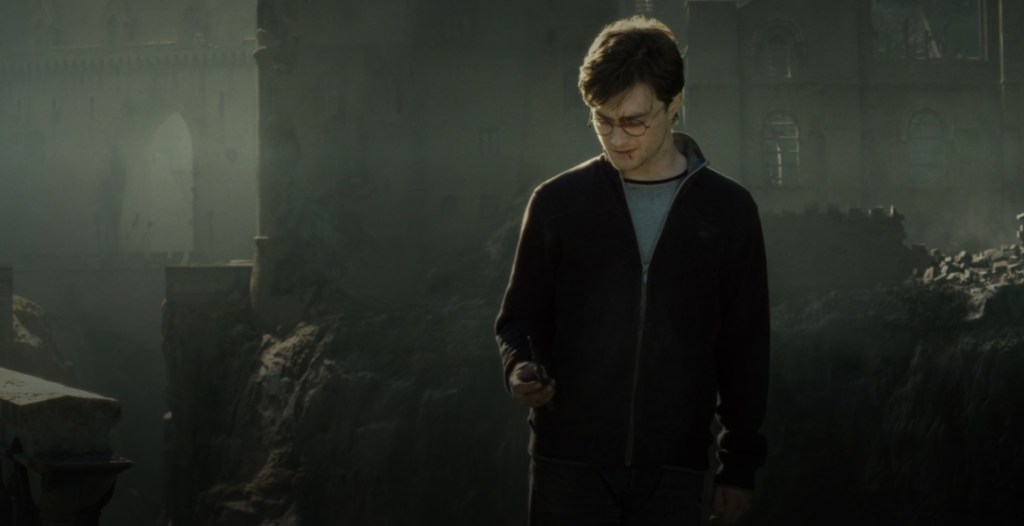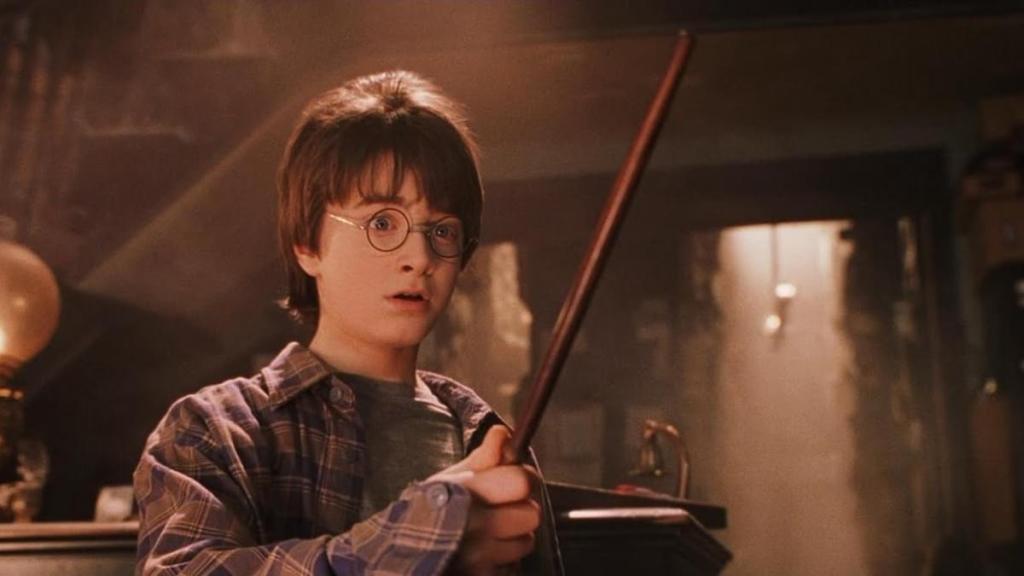
With a Harry Potter remake close on the horizon, Hogwarts Legacy raking in cash, and the Fantastic Beasts series wilting in the rearview, it’s clear that Warner Bros. is looking for new ways to capitalize on the Wizarding World franchise. Millions of fans around the world are guaranteed to show up for whatever this series turns into next, and the setting clearly has potential for more stories outside of the Second Wizarding War. With that in mind, we can look at the main series to see what narrative doors were left open for sequels or spinoffs — and perhaps which ones should have been closed. A major one on our mind is how destroying the Elder Wand at the end of Harry Potter and the Deathly Hallows 2 may have stunted the potential of the Wizarding World’s future, unlike the ending of the book.
The final book in the Harry Potter series — and the final two movies — introduced us to three legendary Wizarding World artifacts: the Resurrection Stone, the Cloak of Invisibility, and the Elder Wand. Together, these three artifacts were said to allow their user to defeat death. In his adventures, Harry found that the stone had been in the possession of Voldemort’s family, and the cloak had probably been passed down in Harry’s family secretly for generations.

The wand, meanwhile, had the best-documented history because its users often boasted of it, leading their rivals to covet it. Many wizards sought the Elder Wand without knowing about the Deathly Hallows at all — simply seeking the most powerful wand in existence. The wand could be “won” by defeating its wielder, but its loyalty was fickle, and it might not lend its full power to a user it found unworthy. The requirements for “winning” the wand were quite flexible, as Harry and Voldemort found out.
[RELATED: Harry Potter Fans Discover Detail That Makes Snape’s Story Even More Tragic]
Years before the main story, Dumbledore defeated his lover, the dark wizard Grindelwald, winning the Elder Wand away from him and nearly ending the long cycle of bloodshed behind the artifact. Dumbledore planned on being killed by Severus Snape and buried with his wand, so that even if someone plundered his grave — as Voldemort eventually did — they wouldn’t be the wand’s true master. However, Draco Malfoy disarmed Dumbledore before his death, making him the wand’s owner. Harry later disarmed and defeated Malfoy, which is why he was the Elder Wand’s master at the end of the story.
Harry possessed each of the Deathly Hallows, but never at the same time. He dropped the stone somewhere in the Forbidden Forest near Hogwarts, and chose never to seek it out again. He kept his ancestral cloak, but the fate of the Elder Wand is different in the book and the movie. Harry uses it to repair his own broken phoenix feather wand — proving its immense power, as no other magic could make that fix. In the movie, he then snaps the Elder Wand and tosses the pieces off a bridge on the Hogwarts grounds, but in the books he actually lays the wand to rest.
“I’m putting the Elder Wand back where it came from. It can stay there. If I die a natural death like Ignotus, its power will be broken, won’t it? The previous master will never have been defeated. That’ll be the end of it.”
Harry Potter and the Deathly Hallows
The Elder Wand in the Harry Potter Sequels
There’s definitely a sense of finality in both of these endings, but we’ve already seen how the lingering existence of the Elder Wand has impacted sequels. In Harry Potter and the Cursed Child — a stage play sequel to the books — Harry is disarmed in a duel against Voldemort’s daughter, Delphini. Delphini is later defeated and bound by Hermione, leading to many fan theories about what this means for the Elder Wand.
Based on what we know, Delphini likely became the rightful owner of the wand when she disarmed Harry, and perhaps Hermione took the power back when she subdued Delphini. That’s assuming that Harry was never disarmed or “defeated” in a meaningful way in the years before this sequel, which seems unlikely. Of course, if the wand stays in Dumbledore’s grave, it’s a moot point. If it is ever exhumed, it would need to be matched up with the person who currently holds its loyalty. This could be impossible to trace, with a long line of deaths and disarmings leading to a cold trail. Anyone else who picked it up would find it to be an average wand and nothing more.
The Elder Wand doesn’t come up in The Cursed Child, so it could be adapted to the screen with no problem. Beyond that, any future sequels that wanted to employ the Elder Wand would need to differentiate themselves from the movies, which could be tricky with legions of die-hard fans having memorized every word of these films. It would lead to widespread confusion and a new round of discourse on adaptation and canon.
The Elder Wand’s Potential

There are plenty of places Harry Potter sequels could go without the Elder Wand, so this doesn’t necessarily need to be an issue. However, it was odd for the movies to take this immense power off the table when the books didn’t — especially because the other two Deathly Hallows are still in play. These could have served as a great trio of McGuffins in later stories with no Horcruxes to hunt, evoking the original adventure without rehashing it outright.
On the other hand, snapping the Elder Wand is a powerful character moment for Harry. He did not let fear or greed drive him to keep this weapon for himself. Book readers however will always think of it lying in wait for him if he really needs it. Even with the other two Hallows out there, the trio is now broken, which means no one could unite them all to become the “master of death.” It signifies a new era for the Wizarding World, with a fresh start.
It’s also worth noting that The Cursed Child is the only sequel to the Harry Potter series we’ve gotten so far. Every other official creation in the franchise has been a prequel, including Fantastic Beasts and Hogwarts Legacy. This makes sense, and is probably the best course for the series in general. Exploring history with the addition of magic presents a lot of opportunities, while peering into the future might present too many things to speculate about at once.
Prequels already have taken advantage of the Elder Wand extensively, depicting Grindelwald with the wand in Fantastic Beasts and allowing the player to actually use it in Hogwarts Legacy. This seems like the best use of the prop’s potential — it connects any story to Harry Potter‘s climactic battle and deepens the history of the Wizarding World in the process.
The Harry Potter and Fantastic Beasts movies are streaming now on Max.
The post Should Harry Potter Have Destroyed the Elder Wand in Deathly Hallows? appeared first on ComicBook.com.

